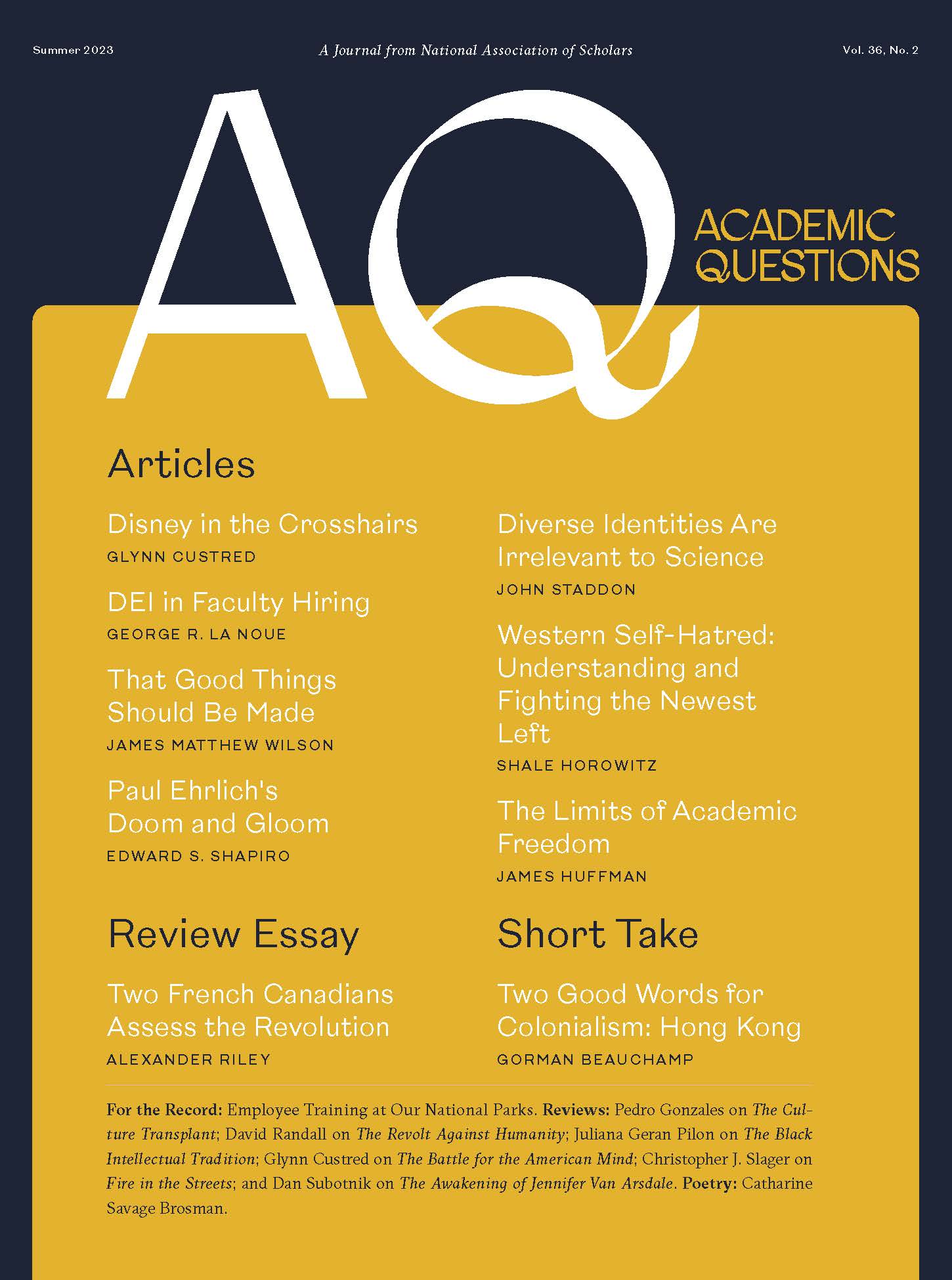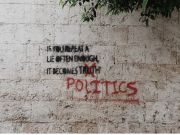The Battle for the American Mind: Uprooting a Century of Miseducation, Pete Hegseth, David Goodwin, 2022, Broadside Books, pp. 288, $14.49 hardcover.
In the 1960s protests swept across the country as activists campaigned, sometimes violently, for a number of issues, including civil rights, feminism, the loosening of restrictions on drug use, free love, gay rights, unilateral disarmament, and opposition to the war in Vietnam. Those protests were a part of the activism of the New Left, a political movement which has been described as both the theoretical reformulation of leftist ideology and a mobilization process whose aim was to create a new order based on socialist principles. Their motives and their justifications ran alongside Neo-Marxism which, like Classical Marxism, called for the overthrow of the status quo in order to create a “more just society.” The difference between those two versions of Marxism was that the Neo-Marxists replaced the conflict between socioeconomic classes, a key element of Classical Marxism, with social tensions which were more relevant to the time, principally race and gender. This made sense to many liberals who advocated for the inclusion of all citizens regardless of race and gender, but who were not committed to, or even sometimes aware of, the underlying ideologies of their most vocal advocates.
Since then, the racial component has evolved into another offshoot of Neo-Marxism known as Critical Race Theory, which asserts that American society is “systemically racist” and that all whites, no matter how they may feel about race, are guilty of the sins of their ancestors and that all blacks are permanent victims. Also, gay protest and certain facets of feminism have been grafted onto a new view of gender expressed in the open-ended category LGBTQ+ (lesbian, gay, bisexual, trans sexual, queer, plus whatever else may prove useful to the campaign). Most recently the emphasis on race and gender has merged into what’s called “Black, Queer Theory.”
Eventually these ideologies worked their way into the influential institutions of society. At first this expansion met little opposition, for those who pointed out what was going on were ignored or were said to be exaggerating, and sometimes even accused of falling for or advocating “right wing conspiracy theories.” The spread of this movement, however, has gone so far that it can no longer be denied, for it has infiltrated all our formal institutions, most prominently higher education, but also government bureaucracies, corporate board rooms, high tech, professional sports, the entertainment industry, and even the military and some churches—a process scrupulously inspected by David Horowitz in The Enemy Within (2021) and Mark Levin in American Marxism (2021).1
No institution, however, is as important as the K-12 education system. It is in these schools that children become acclimated to the dominant ideology, which they carry into adulthood. A pedagogy shaped by Neo-Marxist ideologies hostile to reason makes students less able to think independently and less prone to inquiry, conveying just the opposite of the informed and knowledgeable citizenship traditionally transmitted by public schools. The public, however, is becoming increasingly aware of this takeover, especially in the schools where they can see how it is directly affecting their children. It has also become clear that this move is abetted by powerful teachers’ unions and the education schools that train their members, and that it has been adopted by many school boards across the country, especially in the megaschool districts which have put up barriers to parental involvement, even to the point of labelling protestors at school board meetings “domestic terrorists.” Because of such changes, and the neglect of basic education, a growing number of parents are fleeing the public institutions for private schools.
What is taking place in K-12 public education is the topic of the latest book on this general cultural shift aptly titled Battle for the American Mind written by Pete Hegseth in collaboration with David Goodwin. Hegseth attended Ivy League colleges, has been active in sports, and is a combat veteran of the Afghan war. He is now an author and is most visible in television news and commentary. David Goodwin has worked for Hewlett-Packard and as a market analyst and has been active in the Association of Classic Christian Schools. He is also the editor of The Classical Difference magazine. Goodwin begins with a preface in which he says that he and Hegseth are not academics with doctorates, which places them in a different position for observation and comment. Goodwin explains how he became aware of the problems in early education and conducted the research for the book before handing the narrative over to Hegseth, who tells the story in the first person.
Hegseth spends little time on higher education since “campus craziness,” as he puts it, has been known for decades, for colleges and universities have, in his words, become “indoctrination camps” pouring out teachers into the public schools where they propagate the doctrine that they learn in teachers colleges. The crucial battleground, he says, is kindergarten and the elementary schools. He goes back to the ancient Greek concept of paideia to describe how he and Goodwin regard education and how it is changing. Paideia is not only academic instruction—the skills and knowledge transfer which is the basis of the curriculum—but also training in manners and instilling in students a cultural perspective.
He begins with a summary of the changes now taking place in public education, which he compares to a virus in the way it spreads and how it affects the institutions. A part of this is cancel culture and erasing American history, replacing books in schools with those which depict gender as completely fluid, what he calls “regendering,” and asserting— despite all the progress made in civil rights—that American society is inherently racist. But, he says, if you want to know the whole story you have to go back in time and see how this process originated and how it has developed. He then relates his version of the roots of this process and the slow, steady way it is achieving its goals.
Hegseth starts in the late eighteenth century when the country was largely a Christian nation, predominantly Protestant in orientation. This is no exaggeration, for all of Western Civilization was still based on Christian principles, a time when most countries had state religions. This was also the time of the Enlightenment, when the emphasis among many had shifted from religion to reason and the concept of progress. Many of the Founders were religious but others were Deists, people who believed in a Creator, but not one that is active in human affairs. None of the Founders, however, believed in a state religion, but they all viewed religion as a necessary basis for a viable moral order. Hegseth cites some of the Founders who openly stated this conviction. The perspective on education at the time was Christian based, what he and Goodwin call the Western Christian Paideia (WCP).
Toward the end of the nineteenth century urbanization and industrialization led to major social and economic changes, making the country different in many ways from the agrarian society which it had been until then. In response, a new way of thinking about society developed called Progressivism, a political movement based on a belief in ongoing social progress due to advances in science, technology, and economic development, changes which called for the readjustment of the traditional order. Hegseth tells how this movement affected both political parties, symbolized most overtly by Theodore Roosevelt among the Republicans and Woodrow Wilson among the Democrats. The religious wing of Progressivism was the Social Gospel movement which taught that the duty of the Christian was not just individual but also social salvation, which meant actively working to raise people from poverty, thus merging religious doctrine with political activism. The latter eventually became the dominant factor.
Progressivism as a movement ran its course by 1929, but Hegseth says that it had become coopted by the Democratic Party as seen especially in the policies of Franklin D. Roosevelt, thirty-second president of the United States. Public education, quickly becoming a nationwide system of locally controlled public schools, was greatly affected by the Progressive perspective.
The mid-nineteenth century also saw in Europe the rise of Marxism, the goal of which is to radically change the social, economic, and political order ostensibly in pursuit of a more equitable society. By the early twentieth century this ideology was gaining adherents in the United States, but it was in the 1930s through the 1970s that it had its greatest effect. This was in the form of the Frankfurt School of Marxism, made up largely of refugees from the Nazis, which took up the process begun by the Progressives. The erosion of traditions brought on by those movements, says Hegseth, made possible the revolutionary movements of the 1960s and its products seen in such books as Howard Zinn’s influential A People’s History of the United States (1980), in which American history is rewritten to depict it as a rigged system in favor of a small elite that controls the people for its own purposes, thus mirroring the Marxist perspective; and Saul Alinsky’s Rules for Radicals: A Primer for Realistic Radicals (1971) in which the activist author translates left-wing ideology into practical action. This strand of revolutionary thinking is also the source of the use of language to control thought and action, the silencing of free speech, political correctness, critical theory, and eventually critical race theory (CRT).
Hegseth defines CRT as a critique of society designed to identify the “oppressive” power which the Neo-Marxists aim to bring down, as expressed by such widely read authors as Ibram X. Kendi. He also explains how teacher unions in their development were guided by the growing labor movement which was grounded in the left, absorbing this doctrine and its tactics in the process. More teachers’ unions, says Hegseth, employed Saul Alinsky as a consultant to train their staff, and they used a training document dated 1972 titled “Alinsky for Teacher Organizers.”
After identifying the roots of this movement and its effect on the education system, Hegseth explores what can be done about it. His answer is that those who are opposed to this takeover cannot play according to the old rules, for those rules were designed to protect the status quo, which is now dominated by the left. Those in opposition, he says, are now the insurgents, and they must use the tactics of insurgents in their campaign to defend the right of children to a sound education. Here’s where Hegseth’s military training becomes obvious, for in Afghanistan he served as a senior counterinsurgency instructor. One of the tactics he recommends is to apply Alinsky’s rule to “isolate and attack,” and at the same time “arm” the population with knowledge to discredit the public education establishment and the unions. The goal of Hegseth and Goodwin is to return to the Christian-grounded model of public education. One does not have to agree with that goal, but anyone opposing the capture of this vital institution by the left will benefit from reading Hegseth and Goodwin’s view of the process and how it can be countered in the battle for the American mind.
Glynn Custred is professor emeritus of anthropology at California State University, East Bay; [email protected]. Professor Custred is the author of A History of Anthropology as a Holistic Science (2016) and last appeared in our pages in winter 2022 with “The Language Conundrum,” a review of Randy Allen Harris’s The Linguistic Wars: Chomsky, Lakoff, and the Battle over Deep Structure (2021).
1 Glynn Custred, “Marxism in America,” Academic Questions 35, no. 1 (Spring 2022).
Photo by Micha Frank on Unsplash














